Mongolia << mong GOH lee uh >> is a country in east-central Asia. It lies between Russia and China. Ulaanbaatar is the capital and largest city.
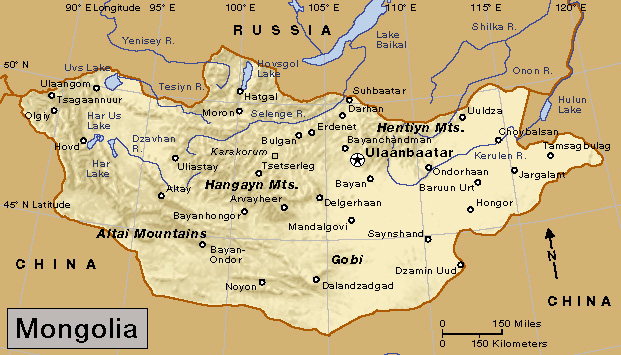
Plateaus and towering mountain ranges cover much of Mongolia. The Gobi, a bleak desert area, blankets much of the southeastern part of the country. Mongolia’s little rainfall occurs in a few summer storms.
Many Mongolians raise livestock for a living. But industry employs an increasing number of people.
Mongolia is the original home of an Asian people called Mongols. The Mongols built the largest land empire in history during the 1200’s. They conquered an area from eastern Asia to eastern Europe. China ruled Mongolia from 1691 to 1911. Mongolia was then called Outer Mongolia. A Mongol region to the south, called Inner Mongolia, is still part of China.
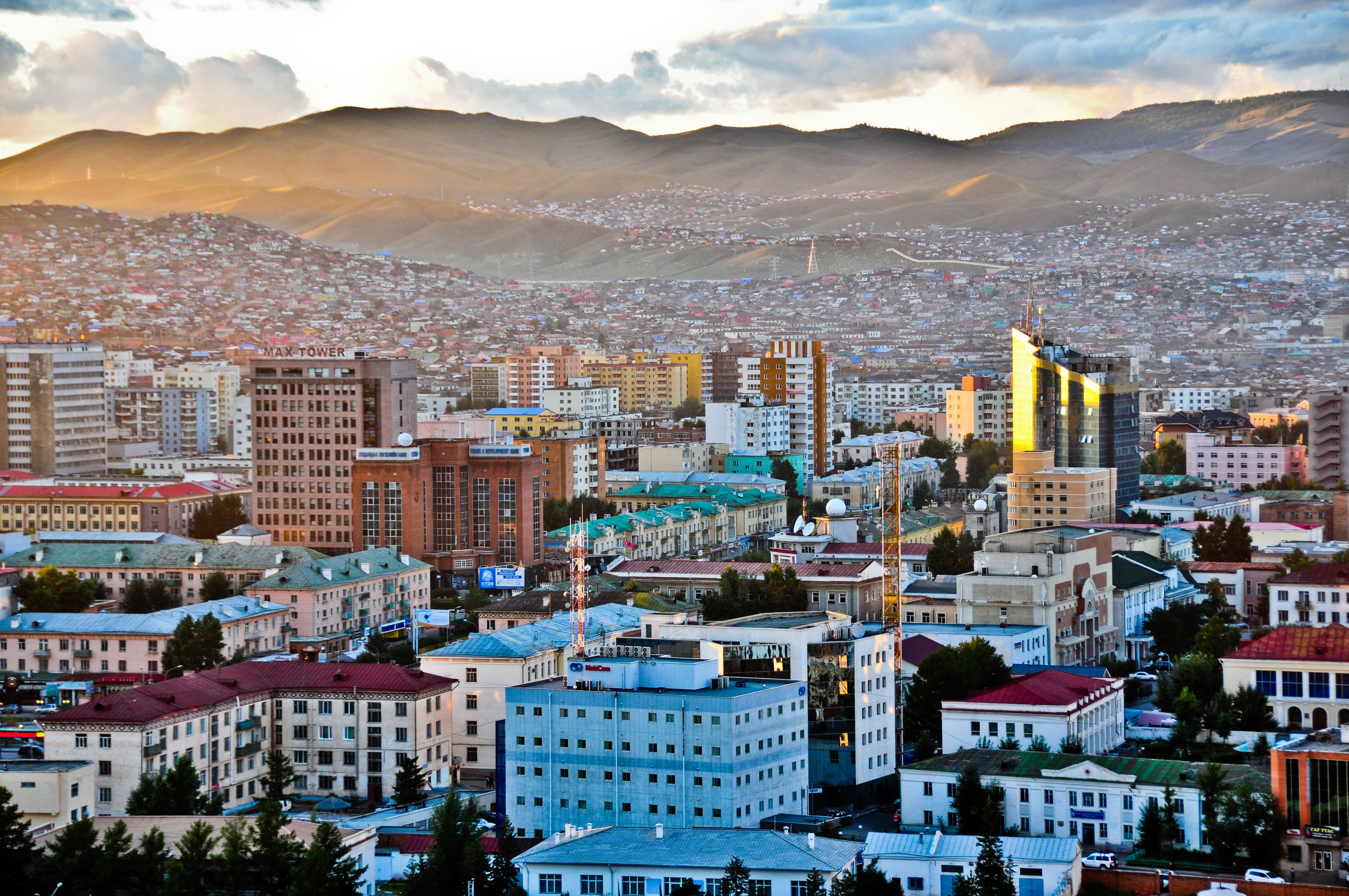
Communists gained control of Mongolia’s government in 1921. In 1924, they established the Mongolian People’s Republic. Their party, the Mongolian People’s Revolutionary Party (MPRP), became the country’s only political party. (The party is now known as the Mongolian People’s Party.) In 1990, the MPRP gave up its monopoly on power, and many new parties were formed. Free elections were held in June of that year.
Government.
Mongolia’s president is elected by voters to a six-year term. The president is the head of the armed forces and nominates the prime minister, who carries out the day-to-day operations of government. The prime minister is usually the leader of the party or coalition with the most seats in the legislature. The prime minister nominates the ministers who make up the Cabinet.
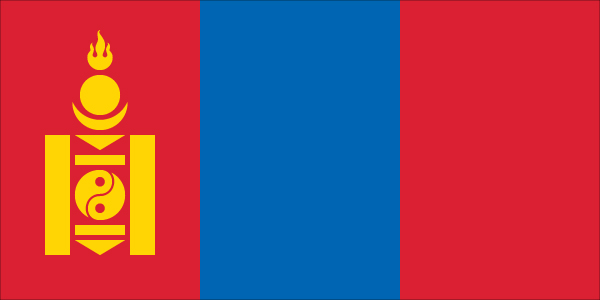
Mongolia’s people elect members of a national legislature that is called the State Great Hural. The members are elected to four-year terms. The 126-member State Great Hural makes decisions regarding domestic and foreign affairs. The legislature also appoints (approves) the prime minister and Cabinet.
For administrative and judicial purposes, the country is divided into 21 provinces, which are called Aimags, and the independent city of Ulaanbaatar, Mongolia’s capital.
The people.
Nearly all the people of Mongolia are Mongols. Kazakhs make up the largest ethnic minority. Some Chinese and Russians also live in Mongolia.
Loading the player...Mongolia's national anthem
The official language, Mongolian, has several dialects. Most of the people speak Khalkha Mongolian, which is the official dialect. Mongolian may be written in two ways. It is written in the Uyghur (also spelled Uighur) script, a traditional Mongolian alphabet borrowed centuries ago from the Uyghur Turks and written in vertical columns. It is also written in a special form of the Cyrillic alphabet, the alphabet of the Russian language.
Lamaism, which is a form of Buddhism, and Shamanism are the chief religions in Mongolia. The practice of religion was discouraged under Communist rule, but Mongolia’s democratic government permits greater religious expression.
Many of Mongolia’s people live on livestock farms. The farms are like huge ranches with small towns in the center. The central buildings include houses, offices, shops, and medical posts for the people and animals.
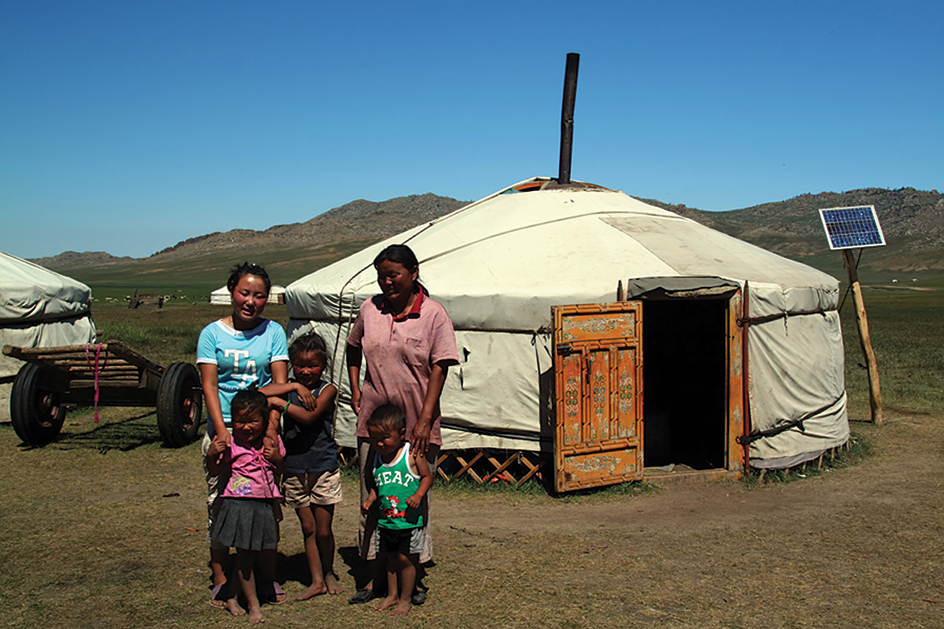
Few Mongolians still follow the traditional way of life of nomadic herders. Those who do, journey from place to place with their animals. They live in felt tents called ger or yurts, which help protect them from the intense heat and cold. The government is gradually settling the nomads on farms.

The Mongolian State University was founded in Ulaanbaatar in 1942. The country has teacher training colleges and technical schools where students study such subjects as agriculture, economics, and medicine.
Land.
No part of Mongolia lies less than 1,700 feet (518 meters) above sea level. The Altai Mountains in western Mongolia rise to more than 14,000 feet (4,270 meters). A high plateau lies between the Altai Mountains and the Hangayn Mountains in central Mongolia. This plateau has many lakes. Uvs Lake, the largest, covers about 1,300 square miles (3,370 square kilometers). Dense forests cover the Hentiyn Mountains, northeast of Ulaanbaatar. Eastern Mongolia is a lower plateau of grassland. It becomes less fertile as it nears the Gobi, a bleak desert area that stretches from southeastern Mongolia into Inner Mongolia. See Gobi.
Climate.
Mongolia has long, cold winters and short, hot summers. In Ulaanbaatar, average temperatures range from a winter low of about –14 °F (–26 °C) to a summer high of about 75 °F (24 °C). Mongolia’s coldest temperatures usually occur in the northern part of the country during the winter. Summer temperatures in the dry Gobi area in the south can be extremely high. Snowfall and rainfall in Mongolia are usually light. Heavy rains may occur in July and August. Violent earthquakes sometimes shake the country.
Economy.
Agriculture has long been important to Mongolia’s economy. Many of Mongolia’s workers are employed in farming. Livestock-raising is the backbone of the agriculture sector. However, occasional droughts and harsh winters can kill many livestock animals. Farmers raise horses for meat; camels, cattle, and goats for meat and milk; and sheep for meat, milk, and wool. Leading crops include potatoes, vegetables, and wheat. 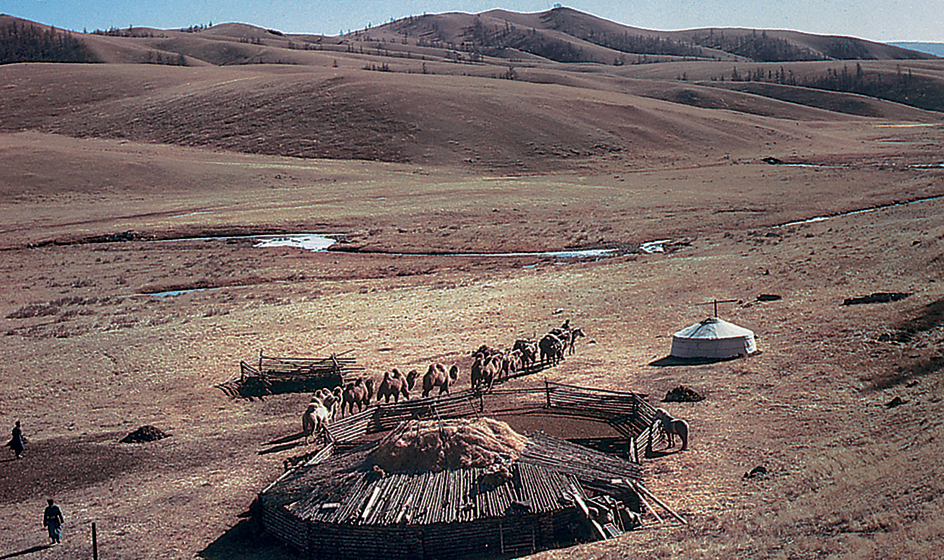
Mining plays an increasingly significant role in Mongolia’s economy. The country has rich deposits of coal, copper, gold, iron, molybdenum, and petroleum. Manufacturing and construction are also important to the Mongolian economy. Building materials, clothing and textiles, and processed foods rank among the chief manufactured products.
Mongolia’s leading trade partner is China. Mongolia also trades with Japan, Russia, South Korea, and the United Kingdom. The country exports clothing, coal, copper, crude petroleum, gold, hides, meat, and wool. Mongolia imports processed food, machinery, motor vehicles, and petroleum products.
Mongolia’s main railroad connects Ulaanbaatar with Russia’s Trans-Siberian railroad in the north and with Chinese railroads in the south. Most of Mongolia’s roads are unpaved. Ulaanbaatar has an international airport.
History.
Various groups of Mongols were united under Genghis Khan in the early 1200’s. Genghis Khan and his grandson Kublai Khan extended the Mongol Empire from Korea and China westward into Europe. The empire broke up in the late 1300’s.
Mongol princes reunited Mongolia in the late 1500’s and converted the people to Lamaism. In 1634, the Manchu rulers of Manchuria gained control of Inner Mongolia. The Manchus conquered China in 1644 and seized Outer Mongolia in 1691. Mongolia, like China, had little contact with other nations during the 1700’s and the 1800’s.
The Mongolians drove Chinese forces out of Outer Mongolia in 1911. They appointed a monk, called the Living Buddha, as ruler, and appealed to Russia for support. In 1913, China and Russia agreed to give Outer Mongolia control over its own affairs. Legally, Outer Mongolia remained Chinese territory. But, in fact, it came largely under the control of Russia. In 1920, during Russia’s civil war, anti-Communist Russian troops occupied Outer Mongolia and ruled it through the Living Buddha. Mongolian and Russian Communists gained control of Outer Mongolia in 1921. They established the Mongolian People’s Republic in 1924, after the Living Buddha died.
The Soviet Union was formed in 1922 under Russia’s leadership, and it existed until 1991. Mongolia supported the Soviet Union in the Soviet-Chinese dispute for leadership of the Communist world.
In the late 1980’s, reforms resulted in more freedom for people in the Soviet Union and Communist countries of Eastern Europe. Influenced by these changes, people in Mongolia held demonstrations in early 1990 for more freedom. As a result, the country’s ruling Communist party, the Mongolian People’s Revolutionary Party (MPRP), gave up its monopoly on power. The country adopted a multiparty system and also began moving toward creating a free-enterprise economy.
In 1990, the MPRP won the legislative elections. That year, the legislature elected Punsalmaagiyn Ochirbat as Mongolia’s first president. In 1992, a new democratic constitution went into effect. In elections later that year, the MPRP again won the majority of legislative seats. In 1993, for the first time, voters directly elected the president. Ochirbat ran as the candidate of the National Democratic and Social Democratic parties and won the election. He served until 1997.
In 1996, a coalition of democratic parties won the largest number of seats in the legislature. The MPRP returned to power in 2000. It governed, either alone or as part of a coalition, until 2012. In 2010, the MPRP changed its name to the Mongolian People’s Party (MPP). Following the legislative election of 2012, the Democratic Party formed a governing coalition with several other parties. The MPP returned to power after a legislative election in 2016. It remained in power following the 2020 and 2024 elections.
In the early 2000’s, Mongolia began construction on the Oyu Tolgoi mine, which sits on one of the world’s largest copper reserves. The mine started producing copper in 2013. After drawn-out disputes over foreign investment in the project, the mine became fully operational in 2023.
